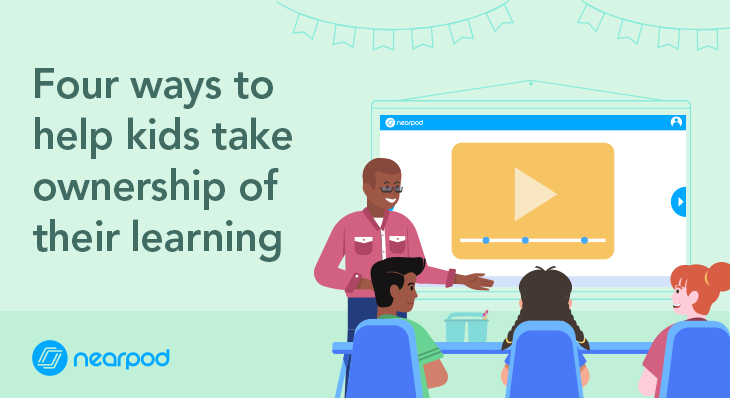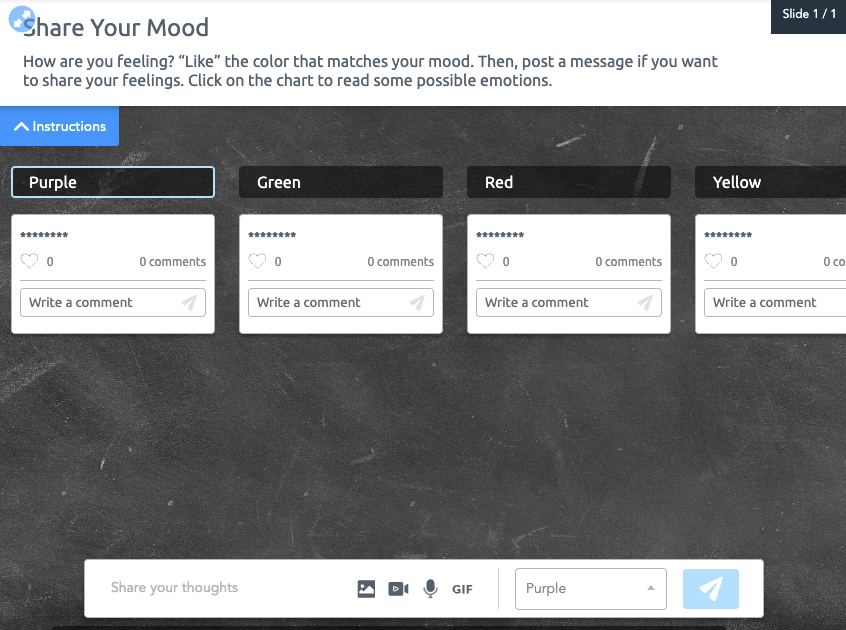
Four ways to help kids take ownership of their learning
Learning is not a passive process. Students are not sponges for facts. Teachers cannot assume they will have each pupil’s full attention simply by standing in the front of the room and talking. Injecting exciting visuals and interactive elements within a lesson is a step in the right direction, but to be an effective teacher, you need to help your kids take ownership of their learning. Below, learn about four time-tested tips that will help you empower your students Below, learn about four time-tested tips that will help you empower your students to take ownership of their learning and be significantly more engaged during instruction with Nearpod.
Learn about four @Nearpod tips will that will help you empower your students to take ownership of their learning!Click To TweetHow to help students take ownership of their learning
1. Provide meaningful choices
It’s unlikely that, given the option, most students would ever choose to learn trigonometry or take a test on animal classifications. All teachers have standards and skills they need to teach, but that doesn’t mean you can’t provide truly meaningful choices to your students along the way! Here are some ideas for choices students can make during your units:
- Create open-ended assignments and projects. Offer suggestions of a fictional character students will write about, or objects on which they can practice calculating volume, or insects they’ll make a diorama for – but ultimately allow them to decide what they want to concentrate on. They’ll develop the same skills regardless of their specific topic, and they’ll be more motivated by focusing on something they already care about.

- Solicit ideas for homework assignments and in-class activities. Students know what they like to do – so listen to them! There are plenty of ways to spice up vocabulary practice or a history presentation, and according to the American Psychological Association, “When students feel a sense of ownership, they want to engage in academic tasks and persist in learning.” Nearpod’s Collaborate Board makes it simple to collect and discuss ideas during class.
- Allow students to set their own pace with Student-Paced mode. Nearpod lessons allow teachers to easily keep all of their students’ devices in sync, but sometimes it’s even more effective to let kids determine their own individual pace. If they want to spend an extra couple of minutes exploring a map or a diagram of the human body, all the better!
2. Establish clear learning objectives
When students begin a new unit, it’s critical that they know what to expect. In some cases, it may even be possible to allow students to design their own individualized learning objectives. The better students know what is expected of them and can track their own growth on tangible skills throughout a unit, the more motivated they will be to achieve success. When lesson planning, ensure your establish clear learning objectives for students.
As an example, imagine a middle school unit on writing short poetry. All students will naturally build basic reading and writing skills, but there are targeted areas students can elect to focus on in their own poems: rhyme, figurative language, visual imagery, reading their work aloud, etc. Have students determine one or two specific skills they’d like to target, and create a journal or visual tracking system they can own throughout the unit to keep track of their personal progress.
3. Give and leverage instant feedback

One of Nearpod’s coolest features is its integrated formative assessments. It’s remarkably easy to include quizzes, polls, and more formative assessment activities as quick knowledge checks directly within your lessons. Students appreciate being able to demonstrate new knowledge immediately, and they can quickly correct mistakes within their learning before those mistakes become internalized.
As a teacher, you can leverage the data collected from these assessments as well. Imagine introducing a class to long division, and just minutes later you have real-time data showing you which students have it mastered and which students will need further practice. Not only that, you can see precisely where students are struggling and adjust the rest of your lesson accordingly. By differentiating your approach with specific students using the data they just provided, you’ll ensure all students are building and practicing the right skills at the right time.
4. Connect new skills and ideas to the real world
There are some students who appreciate learning for the sake of learning, but for many, it’s all about “How will I use this later in life?”. Many adults likely remember asking that very question when first learning algebraic equations or the rise and fall of the Shang dynasty. It’s critical to draw connections between skills students are learning and how those skills are used in the real world.
Pay attention to what your students are excited about and shape your lessons accordingly. I still remember a set of sixth graders who refused to care about speed and motion graphs until a lesson that analyzed a LeBron James dunk from the 2015 NBA Finals. Each day for a week after that lesson, those kids came in eager to practice graphing on new plays and in new sports.

Nearpod’s Virtual Reality (VR) Field Trips makes it easy to transport your students beyond your classroom walls. Show them first-hand what Mayan ruins look like, how whales travel together in pods undersea, or how the Vietnam Veterans Memorial honors those who served in the war. Students can explore these scenes at their own pace and focus on the details they like most.
Start helping students take ownership of their learning today
When students feel ownership over their learning, they simply care more. Engaging your students leads to a more collaborative and focused classroom, which will lead to better mastery of your learning objectives. Fostering a sense of curiosity and motivation in your students will lead to empowered citizens ready to change the world!
Interested in reading more about this topic? Check out this blog post: 5 Student voice tips for teachers to encourage passive learners

Nearpod’s award-winning platform is used by thousands of schools around the globe, transforming classroom engagement.








